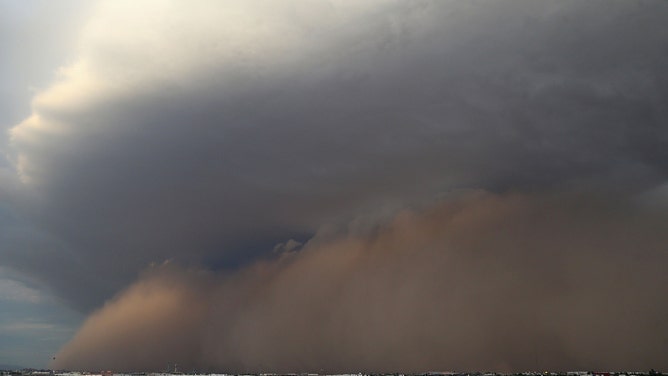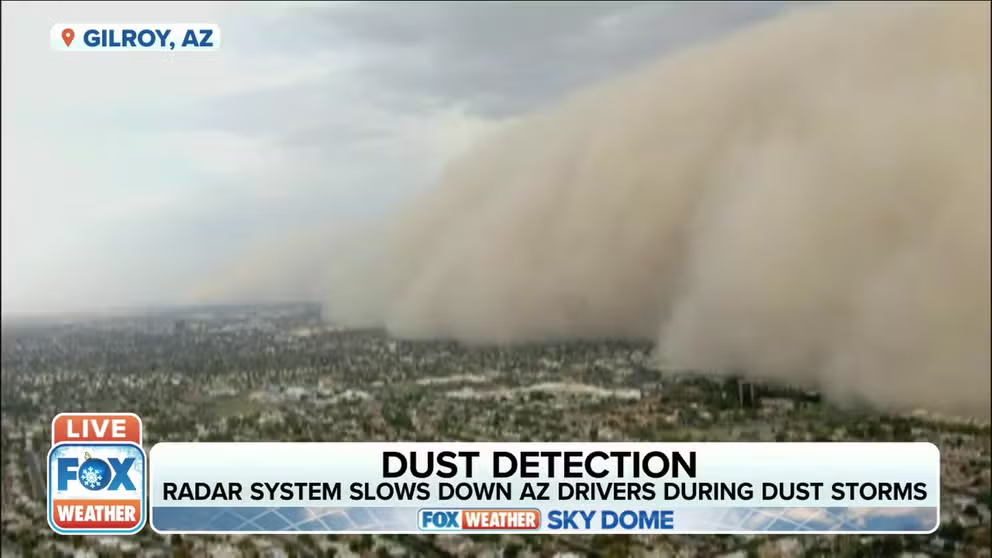Radar system used to help detect dust storms, warn Arizona drivers
The Arizona Department of Transportation recently installed a dust detection system along a section of Interstate 10 that connects Phoenix and Tucson
Radar used to help slow down Arizona drivers during dust storms
As dust storms roll into Arizona, some of the state's highways are left with unsafe driving conditions. So, what can be done to keep drivers safe on dusty roads?
PHOENIX – For drivers that have been caught in a dust storm, they know it can reduce visibility to almost zero in an instant.
The impressive walls of dust are so common in the Phoenix and Tucson areas that the Arizona Department of Transportation recently installed a dust detection system along a section of Interstate 10 that connects the two cities.
May 2020 to April 2021 saw the driest 12 months since 1895 in Arizona. With little rainfall to saturate the ground combined with an above-normal amount of dry earth, dust storms can form if the wind blows sufficiently. Winds from powerful thunderstorms can also kick up a dust storm.
"The dust storm looks like a special effect from a movie," Arizona Department of Transportation spokesman Garin Groff said. "The storms can be a mile high, and they can be dozens of miles wide."
While this weather phenomenon might be fascinating to look at, it can be very dangerous for drivers.
State transportation officials took a look at the crash history of I-10 between Phoenix and Tucson and found that about half the crashes occur in just a 10-mile stretch that is prone to dust storms, so they created a first-of-its-kind dust detection system for that section of the freeway.
A Federal Highway Administration grant was secured to help fund the $72 million project, which also included widening I-10 and improvements to the State Route 87 interchange.
"All of the technologies, individually, are existing and proven, but no one’s ever brought them together and packaged them this way," Groff said.

A dust storm approaches Phoenix before the MLB game between the San Diego Padres and the Arizona Diamondbacks on August 26, 2013, in Phoenix, Arizona.
(Christian Petersen / Getty Images)
A radar system can detect storms more than 40 miles away. When the blowing dust arrives, 13 sensors along the stretch of I-10 use light to determine the dust density. Those sensors can automatically trigger the warning system.
Warnings are displayed on overhead highway message boards, and are combined with digital variable speed limit signs to slow down traffic from the regular 75 mph to as low as 35 mph.
The hope is that drivers can navigate the dusty section more safely by reducing traffic speed.
"That’s the whole point of this – slowing drivers down when there’s blowing dust," Groff said.
However, there are cases when visibility is so low you simply shouldn’t be driving. In those cases, drivers should pull off to the side of the road, turn off the car and take their feet off the brake. You essentially hide on the interstate by following these steps, so other drivers don’t mistakenly follow your taillights and run into you.
Dust storms usually pass within 15 or 20 minutes, allowing you to go about your travel safely.
